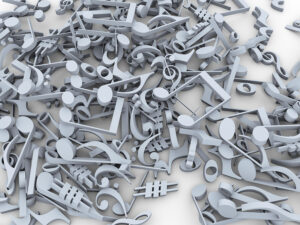When beginner students glance at sheet music and feel overwhelmed—just seeing dots on a page—it’s a signal that their eyes haven’t connected yet with musical meaning. That’s where lessons at home become so valuable: they allow a patient, customized approach that builds reading skills step by step until notation becomes familiar territory.
Five-Step Approach to Connect the Dots
- Identify patterns first
- Start with patterns like scale fragments, chord shapes, or repeated rhythms so dots make musical sense.
- Use rhythmic clapping drills
- Tap rhythms before playing, then read while maintaining steady pulse.
- Sing while you read
- Match pitches with syllables (do–re–mi) before looking at finger placement.
- Practice small sections consistently
- Focus on 2–4 bars at a time—master them, then move ahead.
- Use colored marking
- Add visual cues like dots or highlighted areas on the music for tricky sections. This technique is similar to research-based methods for enhanced visual learning in music (colored notation studies).
These steps transform notation from static dots into dynamic music—and each session builds connection and confidence.
Why This Method Makes a Difference
- Cognitive insights: Understanding notation reduces mental load and improves memory.
- Engagement lifts: Students enjoy visible progress once notation feels meaningful.
- Real-world benefits: Better sight-reading supports ensemble participation, auditions, and long-term growth.
Studies from The Royal Conservatory of Music show strong correlations between music exam engagement and academic achievement—suggesting a link between strong literacy in music and enhanced cognitive development (RCM Neuroscience findings).
We’ve seen similar strategies make a difference in our guide on how to read chord charts for young musicians, where simplifying structure helps new readers stay musically engaged. These pattern-first approaches work whether it’s dots on a page or chords in a pop song.
FAQ – Comprehension Beyond the Dots
Q: Can young beginners really learn sight-reading effectively?
A: Yes—especially when taught with pattern-based methods and slow integration. Children as young as 7 can begin recognizing motifs and shapes in notation within weeks.
Q: What’s the role of marking the music visually?
A: Visual aids like finger dots or chord labels reduce initial overwhelm and reinforce memory—but gradually fade as reading fluency grows.
Q: How long until notation feels natural?
A: With daily short practice (5–10 minutes focused reading), many students feel more confident in 4–6 weeks.
